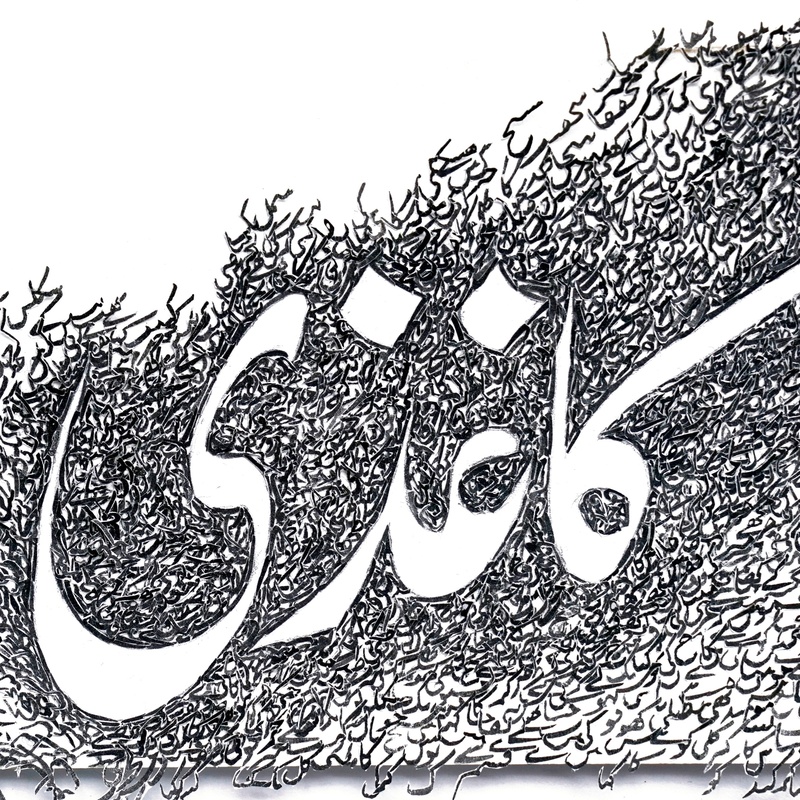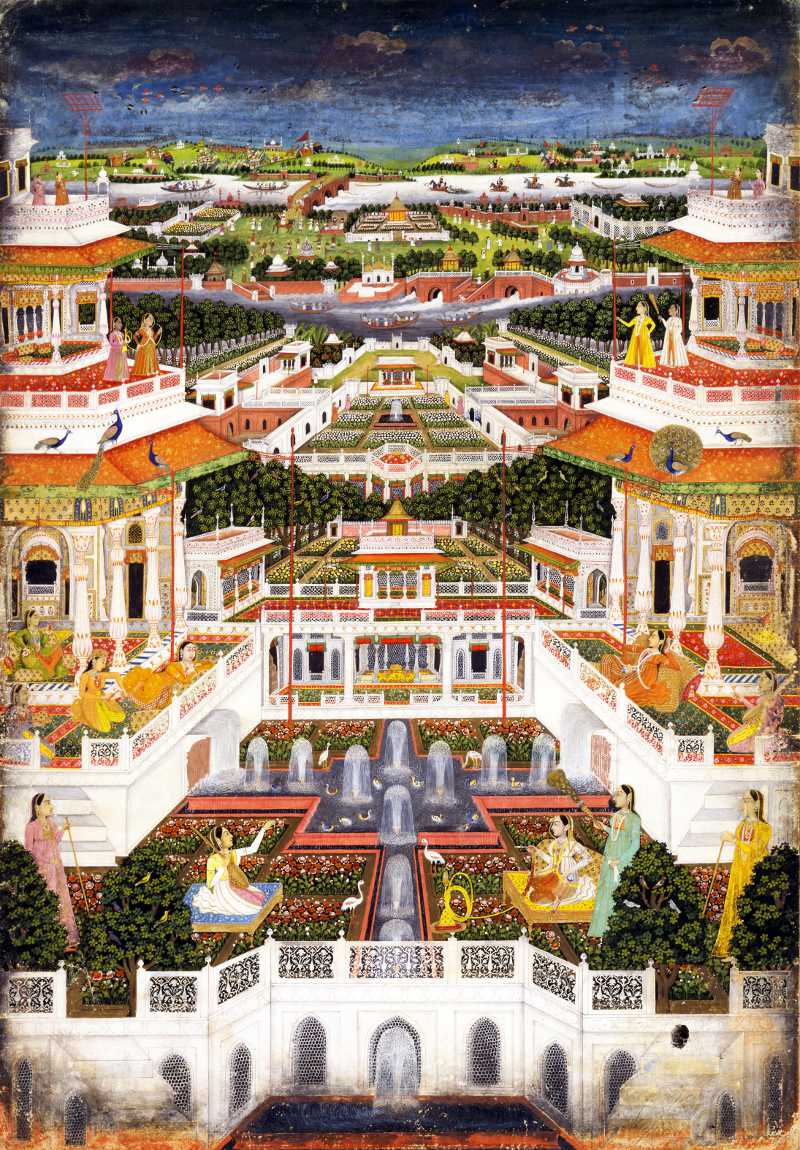FWP:
SETS
CLOTHING/NAKEDNESS: {3,5}
COMMERCE: {3,3}
WRITING: {7,3}
This is one of only a handful of ghazals from which Faruqi has selected every single divan verse as superior.
This verse is a very special one, by virtue of its position. Tradition required every classical poet's divan of ghazals to begin (like most Islamic texts) with praise of God [ḥamd]. The first verse of the first ghazal in the divan was thus the canonical place for this praise; praise was strongly expected to be there, and the verse was read in such a light. The 'mischievousness' of Ghalib's faux-naïf question is thus, in this position, far more potent and punchy than it could be in any other verse.
We can also take taḥrīr to mean 'setting at liberty', as well as 'writing' (see the definition above). For it works excellently with the law-court imagery. We can think of it as spoken by the 'plaintiff' somewhat sarcastically: the figures in a picture may look as though they inhabit a luxurious world, but of course they can't even move around in it, and they haven't been 'set at liberty' in any sense at all-- despite their 'liberation' they remain helpless like prisoners (and like us humans in our 'free' lives?).
Prashant Keshavmurthy points out (Dec. 2008) that in the preface to his Persian divan, Ghalib describes mystical lovers as 'paper-shirted like pictured figures, silent at the astonishment of being' [kāġhazī pairahanand chūn paikar-e taṣvīr az ḥairat-e vāqiʿah ḳhāmosh], and as 'torch-bearers, clad in black like lightning from heart-smoke'. So it's clear that this image was meaningful to Ghalib in more than one context. But did he truly believe that there actually was any such (implausible-sounding) custom in Persia? Who can say? And does it matter? In the world of the classical ghazal, verisimilitude is not exactly anything that anybody aims for. An unpublished verse in which he again uses the paper-robe idea (very cleverly) is {361x,9}. Another 'sign of justice-seeking': {392x,5}.
There has been a great deal of commentarial controversy about this verse, stemming first from Nazm's notorious claim that it is meaningless (despite his then immediately proceeding to explain its meaning), and then secondarily from the strong reaction the claim provoked-- at great length from Bekhud Mohani, but in one way or another from virtually everybody else. Nazm makes a similar claim of meaninglessness about {5,3}, {17,5}, {28,1}, and {223,1}, among other instances.
But look at how Ghalib begins his own analysis, in a letter to a friend written only a few years before his death. Why does he say 'listen to the meaning of the meaningless verses' [maʿnī-e abyāt-e be-maʿnī suniye]? Along with this verse, he explains two others: {6,1} and {6,2}. I've written an article about the commentarial tradition, using this verse as a particular example: 'The Meaning of the Meaningless Verses'.
Harish Trivedi suggests a mention of the fact that Faiz took the title of his first volume of poetry (1943) from this verse. Faiz inserted an iẓāfat into it, making it naqsh-e faryādī , which could mean something like 'the complaining image' or 'the image of the plaintiff'. (From this phrase, by an act of very free transcreation, Agha Shahid Ali took the title of his book of Faiz translations, The Rebel's Silhouette.)
Note for translation fans: Carla Petievich suggests 'caprice' as a
translation for shoḳhī , and I like it a
lot. And in fact 'capriciousness' would be even more accurate, except
that it doesn't quite sound as if it does the harm that
'mischievousness' actually does.
“A Palace Complex with Harem
Gardens,” India, Faizabad or Lucknow; c. 1765, perhaps by Faiz
Allah. From the David Museum.



Special note for newcomers:
If this is your first look at the site, don't be intimidated by the extraordinary amount of commentary on this first verse of the first ghazal. This verse is unique, not typical, and there's a reason for that.